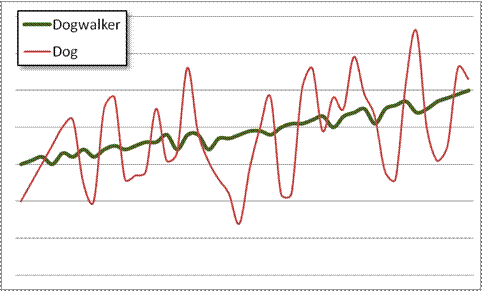Live Big Digest – Aftershocks edition

On October 21 of last year, at 10:20am Pacific Time, millions of people participated in the Great California ShakeOut (www.shakeout.org), practicing the essential earthquake survival skills of “drop, cover, and hold on.” Researchers long ago established that those who practice an emergency response are more likely to utilize it when disaster strikes, thus the importance of fire drills in school and safety demonstrations on airplanes. Yeske Buie was among the firms participating in the ShakeOut, with staff in the Vienna, Virginia office joining their colleagues in our San Francisco office for this important drill. Who would have thought that the first ones to use that training would be the Virginia staffers?
As you know, a magnitude 5.8 earthquake struck Virginia this past Tuesday at 1:51pm local time. True to their training, the Virginia staff dove under their desks while dust from the ceiling tiles began to rain down. Dave happened to be in the Vienna office that day and was perhaps a bit less “shaken” than the others, having grown up in the San Francisco Bay Area and lived through dozens of temblors large and small (including a harrowing experience during the Loma Prieta earthquake in 1989). This degree to which our prior experience influences how we view current events has direct relevance to the heightened vomitility (spelling intentional) in the financial markets (you knew we were going there). It is equally true that the longer we’ve experienced the ups and downs in the market, the more our perspective on current events is moderated. After living through market downturns in 1987, 1991, 1994, 2000-2002, and 2008, we see the occasional resurgence in volatility as something to be expected, and lived through. And just as practicing your “drop, cover, and hold on” technique is the best way to prepare for an earthquake, our best preparation for an uncertain future is to save and invest, diversify and rebalance, and maintain prudent reserves.
Who are you going to watch?
Have you ever watched a dog being walked through a park on a long leash? It inevitably covers ten times more ground than the dogwalker, darting right and left, forward and back, constantly testing the limits of the leash and curious about every leaf and butterfly. If you want to know where that dog is going to end up, watching its wild path won’t provide many clues. Rather, if you want to know where the dog is going, you don’t watch the dog, you watch the dogwalker.
If we want to know where the stock market is going, meanwhile, we need to take a similar approach. Over the long run, the markets follow the economy, of which they’re a reflection. In the short-run, however, stocks react to every bit of news and rumor that flows across the tape minute by minute. Trying to glean information about where we’re going to end up in the long-run by watching the market is like watching the dog instead of the dogwalker. Focusing on the economy, of course, doesn’t necessarily lead to unbridled happiness. Of late, the economy is growing more slowly than we would like, leaving the unemployment rate uncomfortably high. But it is nonetheless growing, and there’s reason to believe that the rate of progress will eventually pick up. That’s what will ultimately determine our financial fates more than the sometimes wild gyrations in the stock market. (special thanks goes to Jason Thomas, BA, MA, MBA, PhD, for giving us the dog/dogwalker metaphor)
We hope all is well with you and yours and that you’re preparing for a restful weekend (unless you’re in the path of the hurricane, in which case we hope you’re evacuating!).
The Yeske Buie Team

